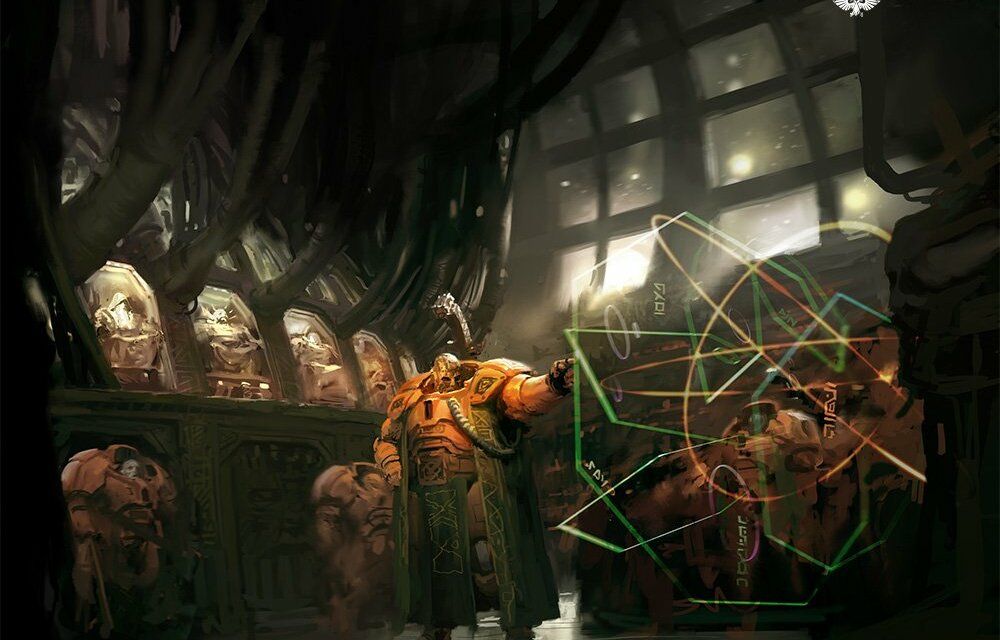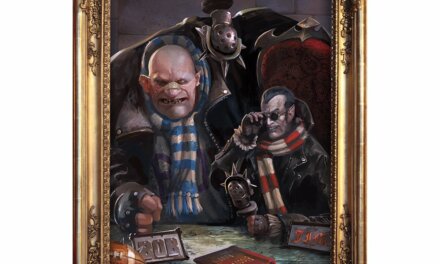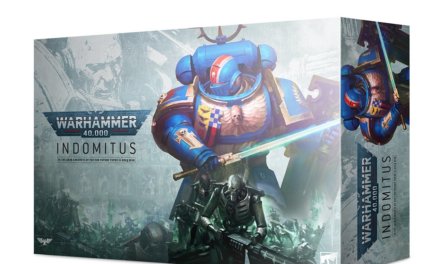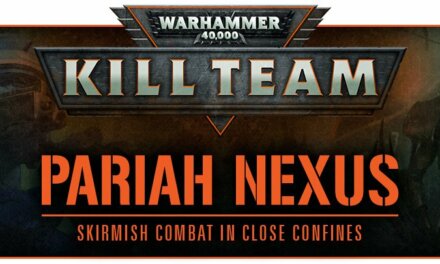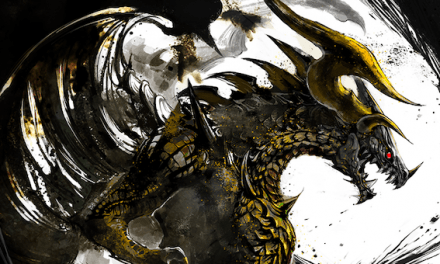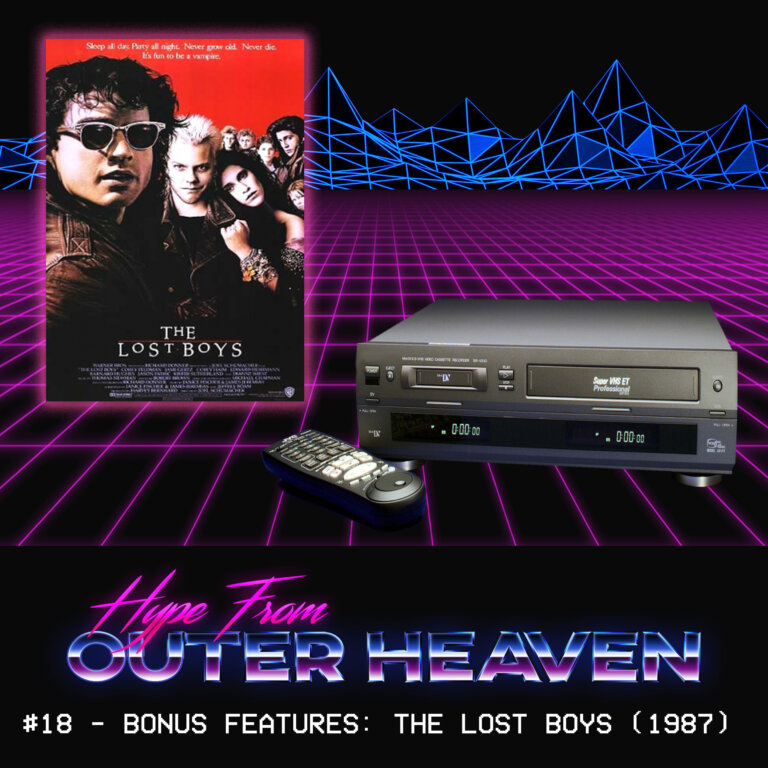My fellow Kin, the Leagues of Votann army set is upon us, join me in welcoming back the Leagues of Votann (formerly known as Squats) to the tabletops of Warhammer 40k.
This fantastic set arrives with everything you need to start collecting this new faction. Beginning with a limited edition codex, it contains the background of the Kin (as they refer to themselves) and aside from their new history, it ties in their old background as the squats or demiurg nicely. Those who are new to the Kin may not know that they were considered almost completely wiped out by Tyranids, this in part because the majority of the race live in the galactic core, a portion of space inhospitable to most other races, and they don’t often venture out. That is until the Great Rift… The rest I leave to you to discover for yourselves.
A little detail I like in the book are certain sayings of the Kin which are blown up and an explanation of what the saying means.
I am a huge fan of Dwarves in most fantasy settings, and the Leagues do not disappoint, though they are never referred to as dwarves, their culture and appearance is very dwarf-like yet with enough of a difference to make them something different than just being space dwarves, much like the Aeldari.
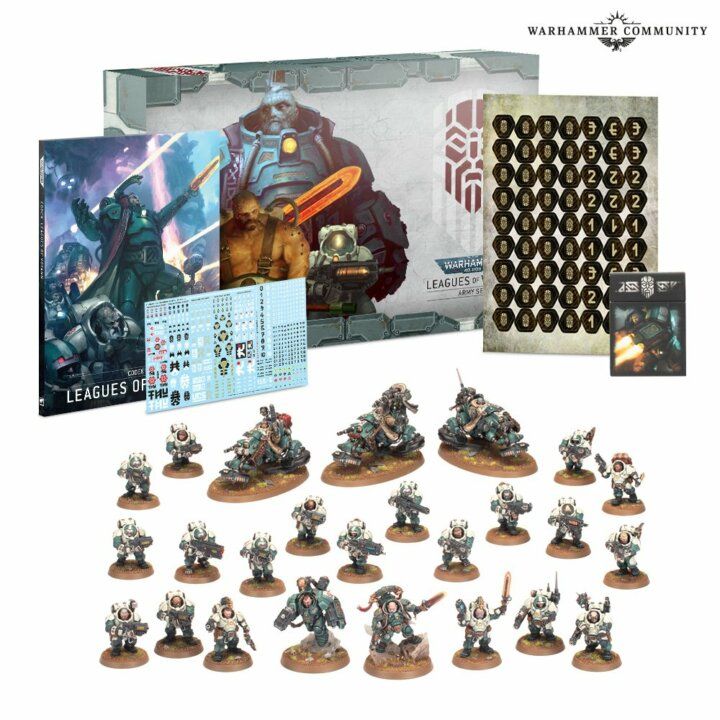
On to the rules. There are several army-wide rules for the Leagues of Votann, a big one being the Eyes of the Ancestors. This rule applies judgement tokens to enemy units for various misdeeds and each unit can accumulate up to three. Your opponent gains these tokens by destroying your units, completing actions or psychic actions, and at the end of your opponents turn you can select one unit close to an objective and give them a token.
The tokens apply a bonus to your units attacks, if you attack a unit with one token then any unmodified hit rolls of a 6 automatically wound the enemy, if a unit has two tokens then the bonus applies on a 5+ if the attack hits, and a 4+ for three tokens. This makes even your basic weapons far more deadly.
Void Armour and Steady Advance are the other army-wide rules. Void Armour prevents your opponent from re-rolling wound and damage rolls, and also reduces the armour penetration characteristic by 1 when attacking you. Steady Advance allows your units to ignore modifiers to their movement characteristic and advance and charge rolls, its second ability allows you to add 3″ to your units advance instead of rolling (or 6″ if the unit has the accelerated keyword, which all vehicles do).
I like the Void Armour rule as it makes units with a lower armour characteristic (like your Hearthkin troops) just that little bit more durable. With Steady Advance you lose the possibility of being able to advance up to 6″, but you have the advantage of always knowing how far you can move when advancing.
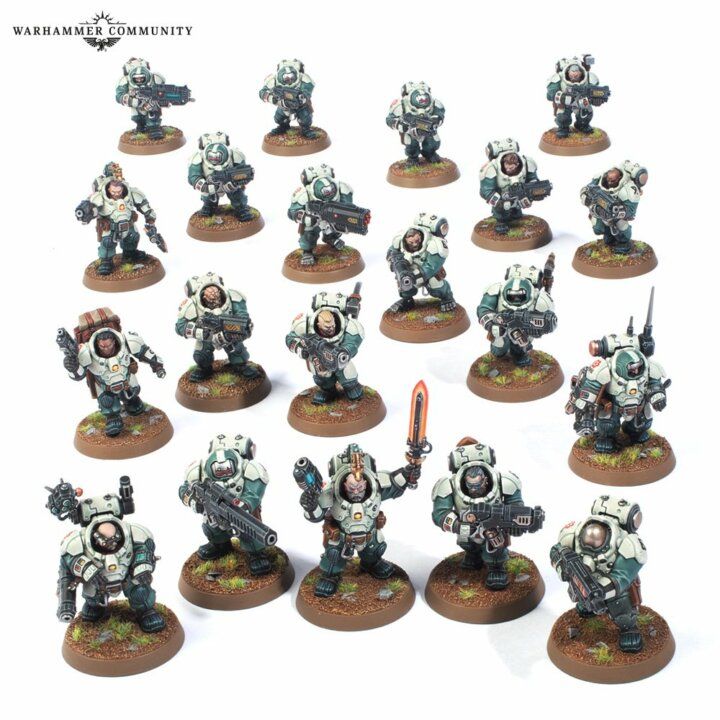
There are several new weapon types that the Kin have access to. HunTR weapons have no special abilities/requirements and get as many attacks as the number next to it indicates, so a HunTR 3 weapon gets 3 shots and so on.
Magna-Rail weapons are powerful, with high strength and damage, they have the Magna-Rail rule which prevents your victims from using invulnerable saves against these attacks and on an unmodified wound roll of a 6 excess damage is not lost, but allocated to other models in the unit until all the damage has been allocated or the unit has been destroyed. Hearthkin have the option to carry these, and the Hekaton Land Fortress can be equipped with a bigger version.
Weapons that have the Beam special rule are able to hit multiple units. If a hit is scored with one you trace a line between the closest point of the firing models base and the closest point of the target models base or hull, you then get to make a wound roll for the target unit and every other unit the line passes over, providing they were eligible targets to begin with. The codex has a few examples to show you how this works.
There are many more weapon types such as HYlas and Ion weapons, plasma axes and swords, concussion and mass gauntlets. These are all Kin versions of weapon types that exist in other 40k armies though their characteristics may differ.
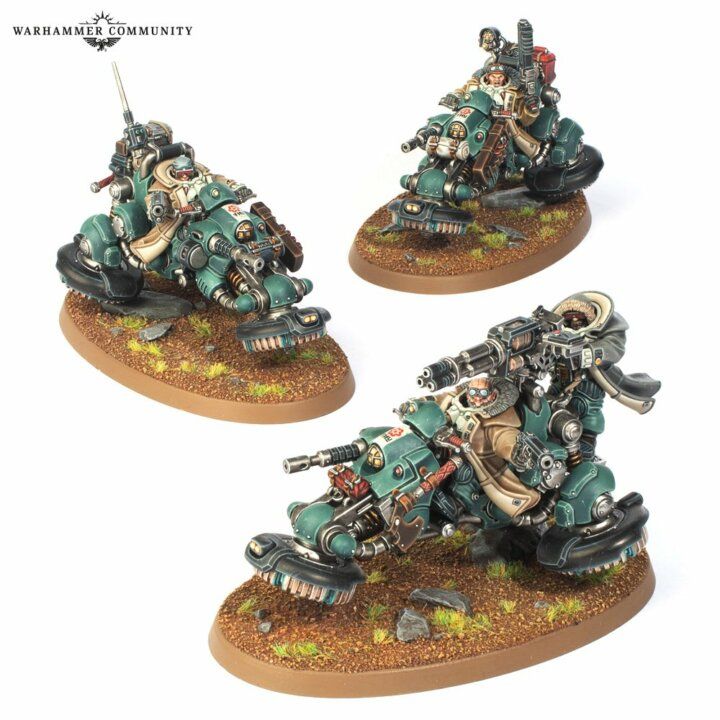
The Leagues of Votann have five named Leagues to choose from as your sub-faction, and a selection of rules you can combine to make your own league if you prefer instead. The largest League and the main one in their background is the Greater Thurian League, this is the league from which the only named character High Kahl Uthar the Destined hails from. The others are, Trans-Hyperian Alliance, Kronus Hegemony, Ymir Conglomerate and my personal favourite, Urani-Surtr Regulates. Each league is talked about in the background section and has its own colour scheme which is shown in the Colours of the Leagues section. All of the named leagues come with three rules each, a warlord trait, a relic and a stratagem specific to that league.
If you decide to create your own league you can choose from the Established League Customs, you get to pick two rules and one ancestral judgement rule. The only exception to this is if you pick the League Affiliated custom, which instead lets you take the rules of one of the named leagues but with the name of your home made league.
The book contains a variety of stratagems and relics, as well as 6 warlord traits and 6 psychic powers. The Votannic Council rules allow you to elevate a Kahl, Grimnyr and Brokhyr Iron-master to a High Kahl, Lord Grimnyr and Brokhyr Forge-master for the required amount of points/power, each of these come with extra abilities but you can only have one of each keyword in the same army.
There is a full set of Crusade rules for narrative campaigns and a name generator with male and female names for your Kin (Something I am happy about as my naming skills are poor). In Crusade your units hold grudges, these are gained by an enemy unit destroying one of yours and you failing an out of action test, your unit then gains a note on its crusade card stating it is holding a grudge against the opposing faction (not just the unit that destroyed it). You then gain several rules until that grudge is settled, the only way to settle a grudge is if the unit holding the grudge itself has a “units destroyed in battle” tally of 3 or more and that unit survives the battle.
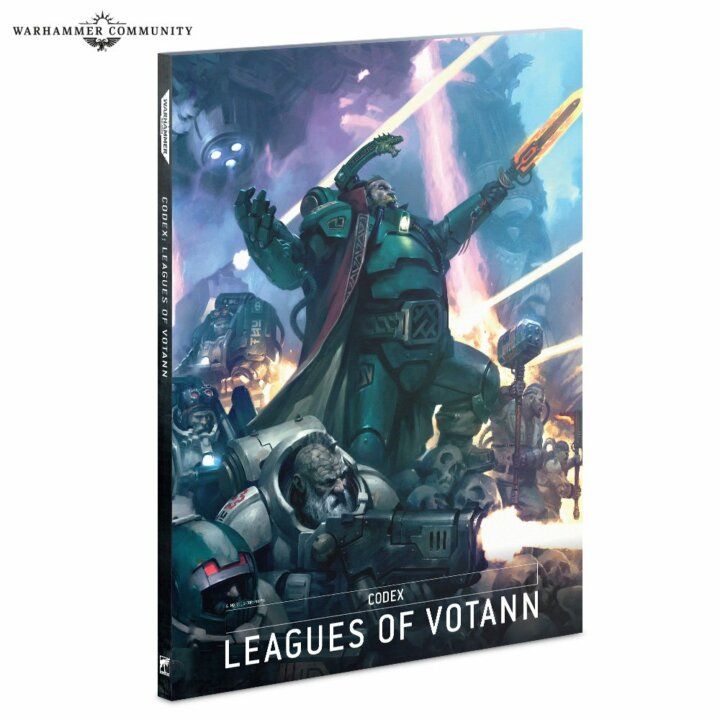
In a Crusade campaign you gain Kindred Acquisitions, 4 resources that you roll for after each battle , the amount gained being determined by the size of the battle which is shown in a table. To keep track of your Kindred Assets there is a blank Kindred Acquisitions record sheet which you can photocopy. You can gain rare resources by rolling a D6 after winning a battle, on the roll of a 6 you gain one rare resource. If you lose a battle there is a cost, after rolling for resources you roll a further D6 (like you do for rare resources) and on the roll of a 1, one randomly selected kindred asset on your sheet stops working and its effects cannot be used again until you pay the cost in resources that are required. There are two pages of these crusade abilities, each with its own cost and effect, and each can be upgraded for greater resources to gain the upgraded effect. These rules tie in to the mining and resource gathering aspect of the Kin and for me are great for immersion and sound really fun. I am highly looking forward to steal… I mean acquiring my opponents resources for the Kin.
One thing that should be mentioned is that Games Workshop have recently released an FAQ days after release which has increased the points cost of every unit in the Leagues of Votann in an attempt to balance the army which was considered too strong with its combination of special rules. Alongside the points increase is a change to the Eyes of the Ancestors ability, previously if an enemy unit was auto-wounded as a result of the ability, any special abilities that would trigger on a specific wound roll would consider that roll to have been an unmodified 6. It has now changed so that it is never considered to be an unmodified 6, which makes the special abilities of some weapons like the Magna-Rail weapons very hard to trigger against units with judgement tokens on them. While balance is never a bad thing, some of the points increases seem a little too harsh.
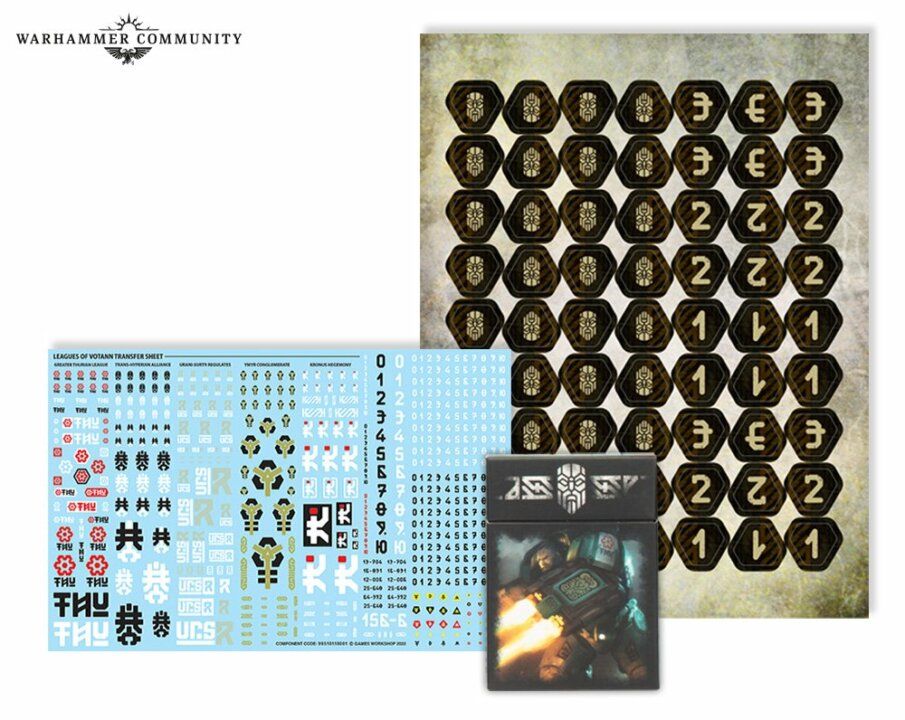
Now for the rest of the set.
In the set you will get a Kahl, which can alternately be made as Uthar the Destined, an Einhyr Champion, 20 Hearthkyn warriors and 3 Hernkyn pioneers, a great start to an army with these amazing looking models, I am eagerly awaiting the release of the rest of the army (though my wallet is not).
It comes with a set of Datacards, including all stratagems for the Leagues of Votann and the psychic powers of the Skeinwrought discipline, plus one for the smite power. One sheet of 63 tokens to track your abilities and judgements. And two transfer sheets.
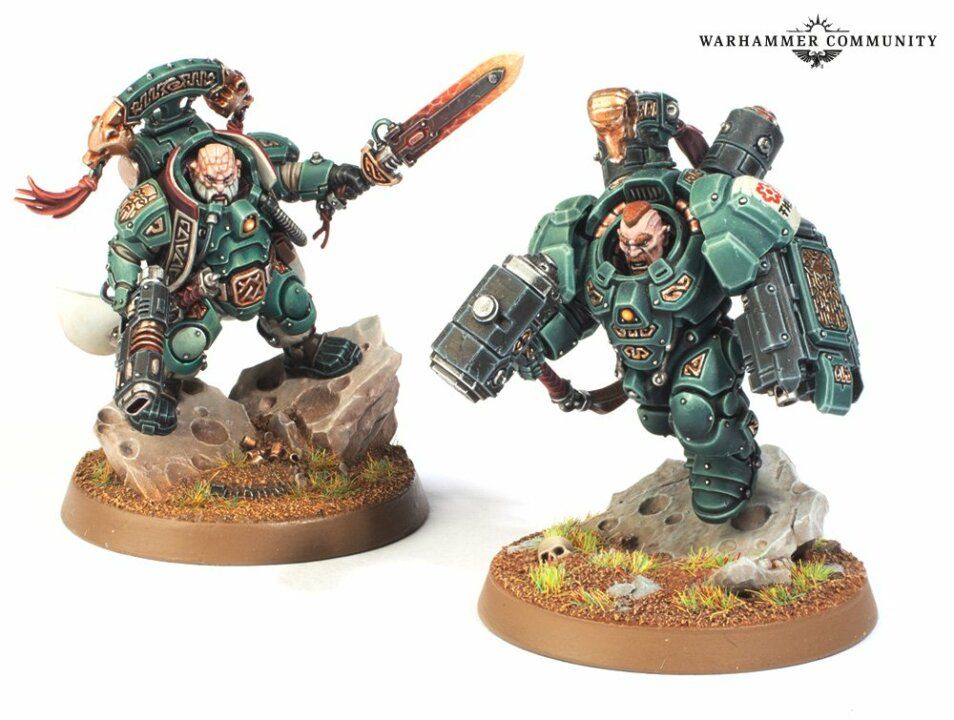
This set is well worth the price for what it comes with. The codex is a great read and packed full of rules that are mostly straightforward and easy to remember, the recent change to Eyes of the Ancestors has muddied the waters a little and could have been done better in my opinion but it hasn’t changed things too drastically as to completely invalidate certain weapons, we are Kin, survival is what we do and so we shall play on.
The models are fantastic and come with a nice range of extra bits, helmed and bare heads. As mentioned I think it is a great start to an army, though i would have preferred a Grimnyr (psyker) in place of the champion, mix it up instead of having two combat characters, but that is just my preference.
The datacards and especially the token sheet will be very useful, and the transfer sheets come with symbols for each of the 5 named leagues as well as numbers and general symbols for marking out your squads (thats squads not squats).
Even the box comes with some beautiful artwork as does the codex cover.
I am very pleased with the set and would recommend it to anyone wanting to start a new force and especially to any Longbeard’s like me who wish to take their grudges to the stars.

